COSPAR ID 1984-011A Orbits completed 128 Apogee 317,000 m Landing date 11 February 1984 | SATCAT no. 14681 Period 1.5 hours Launch date 3 February 1984 Dates 3 Feb 1984 – 11 Feb 1984 | |
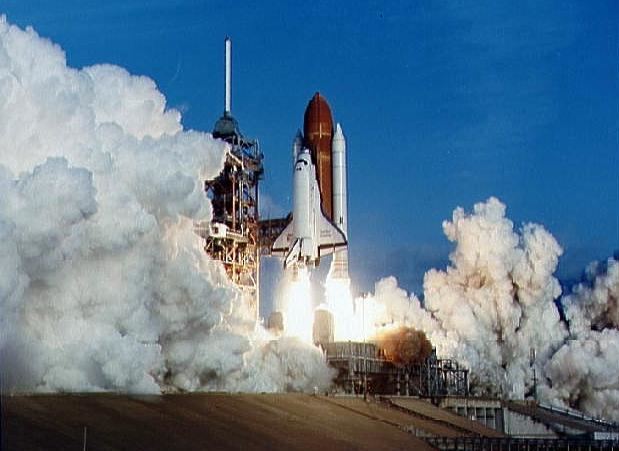 | ||
Mission type Satellite deploymentEquipment testing Mission duration 7 days, 23 hours, 15 minutes, 55 seconds Distance travelled 5,329,150 kilometres (3,311,380 mi) Members | ||
STS-41-B was the tenth NASA Space Shuttle mission and the fourth flight of the Space Shuttle Challenger. It launched on February 3, 1984, and landed on February 11 after deploying two communications satellites. It was also notable for including the first untethered spacewalk.
Contents
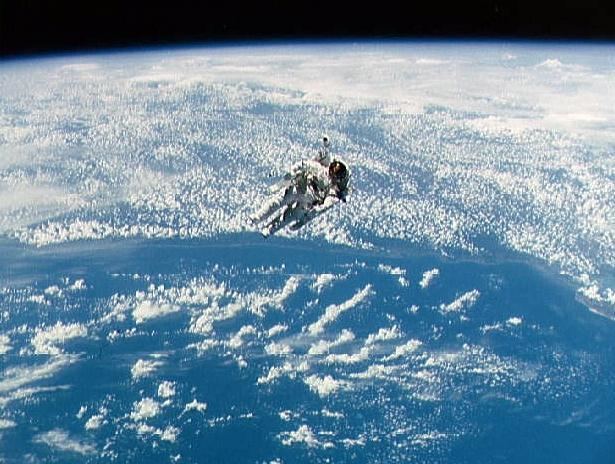
Following STS-9, the flight numbering system for the Space Shuttle program was changed. Thus, the next flight, instead of being designated STS-11, became STS-41-B; the original successor to STS-9, STS-10, was cancelled due to payload delays.
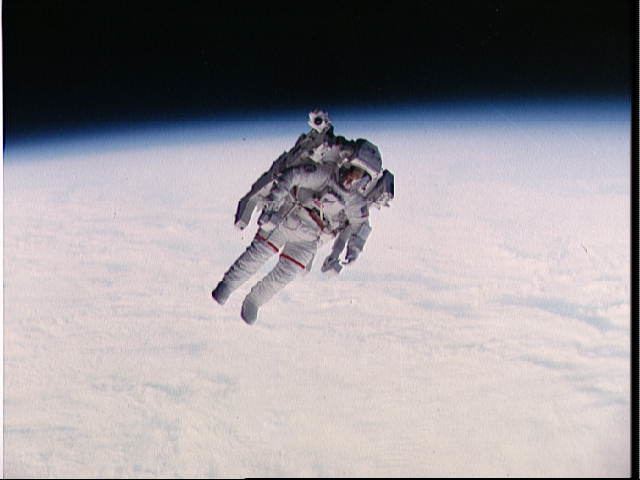
Spacewalks
Mission summary
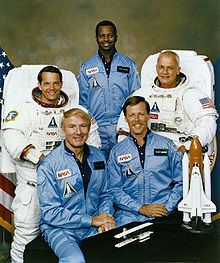
Challenger lifted off from Kennedy Space Center at 8 am EST on February 3, 1984. Two communications satellites were deployed about 8 hours after launch; one, Westar 6, was for America's Western Union, and the other, Palapa B2, for Indonesia. However, the Payload Assist Modules (PAM) for both satellites malfunctioned, placing them into a lower-than-planned orbit. Both satellites were retrieved successfully in November 1984 during STS-51-A, which was conducted by the orbiter Discovery.
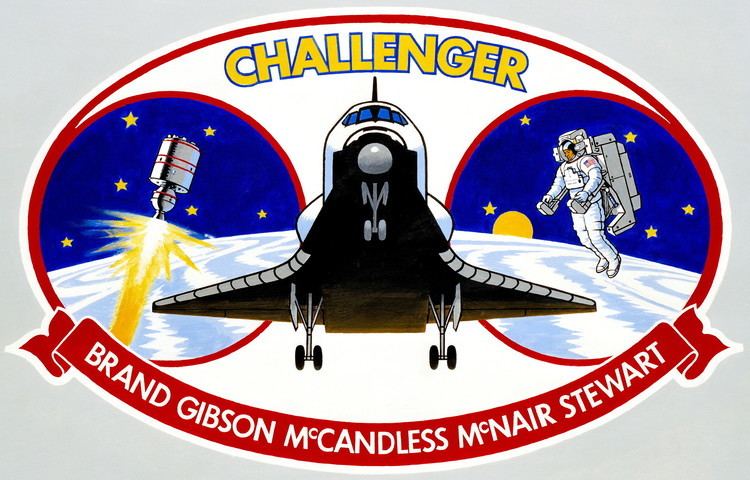
The STS-41-B crew included commander Vance D. Brand, making his second Shuttle flight; pilot Robert L. Gibson; and mission specialists Bruce McCandless II, Ronald E. McNair, and Robert L. Stewart.
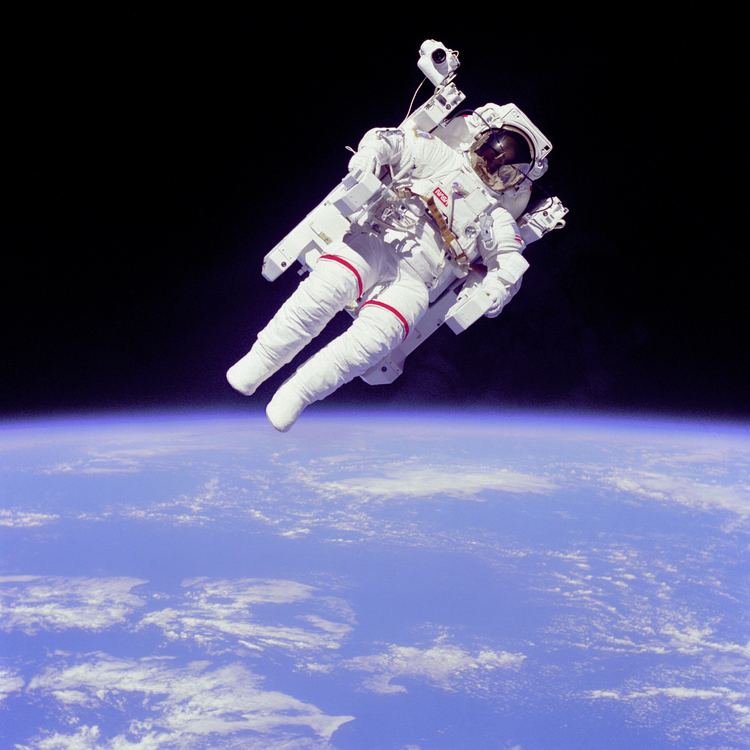
On the fourth day of the mission, astronauts McCandless and Stewart performed the first untethered spacewalk, operating the Manned Maneuvering Unit (MMU) for the first time. McCandless ventured out 320 feet (98 m) from the orbiter, while Stewart tested the "work station" foot restraint at the end of the Remote Manipulator System. On the seventh day of the mission, both astronauts performed another EVA to practice capture procedures for the Solar Maximum Mission satellite retrieval and repair operation, which was planned for the next mission, STS-41-C.
STS-41-B also achieved the reflight of the West German-sponsored SPAS-1 pallet/satellite, which had originally flown on STS-7. This time, however, it remained in the payload bay due to an electrical problem in the RMS. The mission also carried five GAS canisters, six live rats in the middeck area, a Cinema-360 camera and a continuation of the Continuous Flow Electrophoresis System and Monodisperse Latex Reactor experiments. Included in one of the GAS canisters was the first experiment by a high school team to fly in space. The experiment, on seed germination and growth in zero gravity, was created and built by a team from Brighton High School in Utah through a partnership with Utah State University.
The 7-day, 23-hour, 15-minute, 55-second flight ended on February 11, 1984 with a successful landing at Kennedy Space Center's Shuttle Landing Facility. This marked the first landing of a spacecraft at its launch site. Challenger completed 127 orbits and traveled 2.8 million miles.
Astronaut Ronald E. McNair would later die in the Challenger disaster on 28 January 1986.
Mission insignia
Designed by artist Robert McCall, the eleven stars in the blue field symbolize the mission's original designation as STS-11. The left panel shows the deployment of a satellite, and the right panel shows an astronaut using the MMU.
Wake-up calls
NASA began a tradition of playing music to astronauts during the Gemini program, and first used music to wake up a flight crew during Apollo 15. Each track is specially chosen, often by the astronauts' families, and usually has a special meaning to an individual member of the crew, or is applicable to their daily activities.
After the mission
One of the astronauts later sued a singer over using the public domain photo of him in space on this mission in the 2010s.
Ronald McNair died on the STS-51-L in January 1986. R. McNair was selected for STS-51-L, which launched on 28 January 1986, but he was killed when Challenger disintegrated nine miles above the Atlantic Ocean starting after about 1 minute after liftoff.
